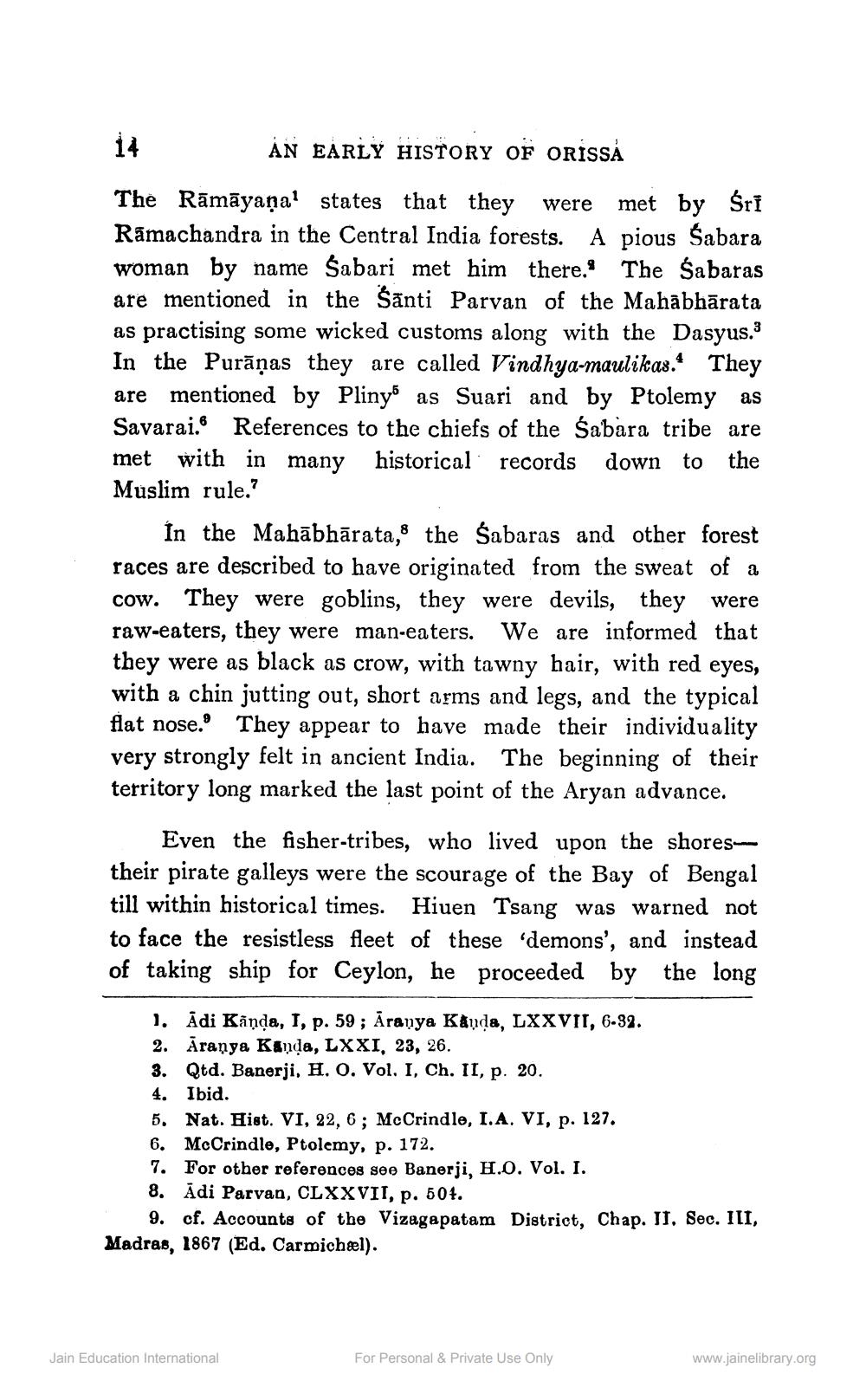________________
AN EARLY HISTORY OF ORISSA The Rāmāyaṇal states that they were met by Śrī Ramachandra in the Central India forests. A pious Sabara woman by name Sabari met him there. The Śabaras are mentioned in the śānti Parvan of the Mahābhārata as practising some wicked customs along with the Dasyus. In the Purāņas they are called Vindhya-maulikas. They are mentioned by Plinyó as Suari and by Ptolemy as Savarai. References to the chiefs of the Śabara tribe are met with in many historical records down to the Muslim rule.?
In the Mahābhārata, the Śabaras and other forest races are described to have originated from the sweat of a cow. They were goblins, they were devils, they were raw-eaters, they were man-eaters. We are informed that they were as black as crow, with tawny hair, with red eyes, with a chin jutting out, short arms and legs, and the typical flat nose. They appear to have made their individuality very strongly felt in ancient India. The beginning of their territory long marked the last point of the Aryan advance.
Even the fisher-tribes, who lived upon the shores their pirate galleys were the scourage of the Bay of Bengal till within historical times. Hiuen Tsang was warned not to face the resistless fleet of these 'demons', and instead of taking ship for Ceylon, he proceeded by the long
1. Adi Kāņda, I, p. 59 ; Araṇya Kanda, LXXVII, 6-32. 2. Āranya Kanda, LXXI, 23, 26. 3. Qtd. Banerji, H. O. Vol. I, Ch. II, p. 20. 4. Ibid. 5. Nat. Hist. VI, 22, 6; McCrindle, I.A. VI, p. 127. 6. McCrindle, Ptolemy, p. 172. 7. For other references see Banerji, H.O. Vol. I. 8. Adi Parvan, CLXXVII, p. 50+.
9. cf. Accounts of the Vizagapatam District, Chap. II, Sec. III, Madras, 1867 (Ed. Carmichel).
Jain Education International
For Personal & Private Use Only
www.jainelibrary.org




